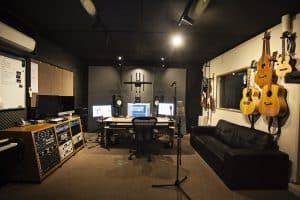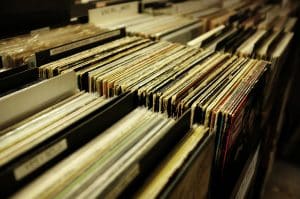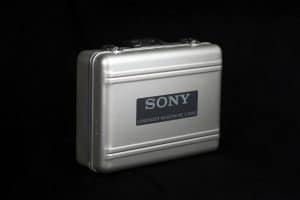Reggae origins
Reggae music is a style of music that began in Jamaica in the late 60s. It can also signify any recent popular music coming out of Jamaica. In 1968 , Toots and the Maytals released a single: “Do the Reggay”. This was the first mainstream hit to use the word. This pretty much named it and introduced it rapidly to the rest of the world. Occasionally Reggae is used to refer to various kinds of popular Jamaican music. However, the term reggae more accurately relaties to a music style that was influenced by “mento”. Certain areas of American music such as jazz and RnB also had their influences on the style.
Reggae lyrics
Reggae music lyrics usually go down the path of political ideology, general world gossip and philosophies of life. It branched out spread into a more popular way in America, being represented first as “Rudie Blues”. Later, (including up to today) it was referred to as”Ska” and later still, “Blue Beat” or “Rock Steady” . It{s easy to recognize the bass and drum patterns that compliment each other. Basslines are often disjunct and melodic, using alot of arpegios. The drums are consistent and fairly simple. The guitar pattern is almos strictly off beat, creating a steady pulse to dance to.
Jamaica in the spotlight
Jamaican music became a whirl wind in the 1950s. This was long before reggae music actually existed in the form we know it today. Harry Belafonte was a huge sensation and started out as a lounge jazz singer who branched into pop. However, Harry became more and more interested in folk songs. He had some big hits using the traditional acoustic songs of his parents town. Harry termed himself as a “Calypso singer”. He sold huge volumes of records. Having said this, his records were quite different from the brassy, satirical and hypercalypso music that was played often in Trinidad And Tobago. T and T is calypso’s homeland. Belafonte’s music was a lotcloser to a tidy and simplified sort of mento. Mento is Jamaicas pre-ska music. These sort of styles are regularly captured in a good Sydney Recording studio.
Recordings like ‘Matilda’ and &‘The Banana Boat Song’ were easy listening tunes which US audiences loved and purchased. It would be wrong however to refer to Belafonte as an Adonyne. Belafonte took advantage of this to draw attention to civil rights issues. He skillfully used the music as a platform for humanatarian causes. Although he didn{t play reggae music, Belafonte paved the way for Carribean influence in American radio.
The history of Reggae can be skillfully captured in a Sydney Voice Over studio.
Harrys influence
Belafonte’s impact is still evident all over the world and can be heard on radios in all types of settings. However, the following Jamaican style to emerge still has considerable influence in both the reggae of today and also other brands of pop. Later in the 50s, ska, the immediate precursor of reggae music came blazing out of Kingston. It came for with its regular guitar stabs and waving of issues both political and every day. It introduced a rude boy culture and a certain bad ass image. Kings of the genre such as: The Skatalites, The Wailers and Prince Buster, enjoyed long careers. They actually served various record companies ver well including one that became a major label.
Great cover artists often enter a great syndey sound studio to record the music of Belefonte even today.
Reggae music goes viral
Throughout the 60s and 70s reggae began to attract musicians of non Jamaican background. Among them was Georgie Fame, whose first recording, Live At The Flamingo, had a version of Eric Morris’ ‘Humpty Dumpty’. His first 2 singles, from The Blue Flames, were ska compositions issued on R&B, a UK company directed at the Windrush Generation. The Migil Five, a n British band, came out with Les Paul & Mary Ford’s ‘Mockin’ Bird Hill’ with which they got to number 10 on the UK charts. In America, Nickie Lee, a radio disk jockey, put out a cover of Prince Buster’s ‘Ten Commandments Of Man’. The Chinese-Jamaican ska legend Byron Lee, appeared in Dr No, the very firstJames Bond movie. This did plenty to boost the image of Jamaica as a cool, young persons country.
Buster the king
There were many other artists who came under the influence of Prince Buster. Alex Hughes from Kent, a nightclub bouncer who loved reggae also forged a career around it. He reinvented himself as Judge Dread in reference to another Prince Buster tune, Hughes’ ‘Big Six’. Yes, reggae music influenced the story line around Mega-City One.
Ruder tones and reggae music in Britain
Buster’s lewder incantations also surfaced in the music of Ian Dury, in songs such as ‘You’re More Than Fair’ and ‘Billericay Dickie’. Dury then went on to have influence over Madness, who emerged in 1979 from the post-punk 2Tone movement. This placed Jamaica’s 60s rude boy culture in a new UK environment. Furthermore, the debut single of Madness was in itself a tribute to Buster. You’ll find shades of Buster other places in 2Tone. For example, The Specials’ 1981 ‘Ghost Town’, borrows ideas from Buster that he used on his1967 single ‘Seven Wonders Of The World’.
Reggae music spreads through the UK
In the 1970s reggae spread to the UK, where a combination of Jamaican immigrants and local Britons started a reggae movement. This movement produced names such as Aswad, Steel Pulse and UB40. Furthermore, the performance poet Linton Kwesi Johnson. In addition, reggae caught on in the United States through the work of Marley.
Marley began his musical career with the Wailers. He formed this group with Peter Tosh and Bunny Livingston in 1963. By 1969 Bob, Tosh and Livingston had really imersed themselves in Rastafarianism, which had a great impact on Marley’s music and on reggae music overall. The Wailers united with Lee Scratch Perry, producing some of their greatest tracks like “Soul Rebel”, “Duppy Conquerer”, “400 Years” and “Small Axe.” This collaboration came to a close badly when the Wailers found that Perry, sold records in England without their permission. Yet, this actually brought the Wailers’ music into the realm of Chris Blackwell, the boss of Island Records.
The wailers break up
Blackwell signed the Wailers and produced their debut album, “Catch a Fire”. This was shortly followed by “Burnin'”, with tracks as “Get Up Stand Up” and “I Shot the Sheriff.” Eric Clapton’s version of this went to #1 in the US. In 1974 Tosh and Livingston parted ways with the Wailers to begin solo careers. Marley then went on to form the band “Bob Marley and the Wailers”, with his partnerRita as one of the backup singers named the I-Trees.
Fusion with other styles was a consequence of the music’s globalization and involvement with international influences.
Crash Symphony productions regularly records the reggae music in the superior Sydney recording studio.




